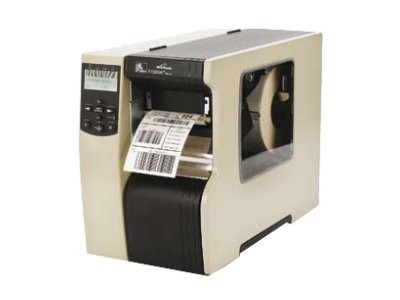The printed circuit board (PCB) is the “brains” of your device, and therefore critical to it’s operation. When considering how to protect the Printed Circuit Board (PCB), barcode labels come into play, enabling automatic identification. How can you choose the right barcode label for your printed circuit board (PCB)?
The data contained on a Printed Circuit Board (PCB) barcode label can include:
- When and where the board was made.
- Solder temperature.
- Flux density.
- Component lot numbers.
- Test data.
This information helps track the PCB from the bare board to the completed unit, so you have real-time data on inventory, work-in-progress, and other essential information that improves your operational efficiency.
While electronic equipment manufacturers appreciate the value of automated data collection, the challenge has been finding the right barcode label and label printer for printed circuit boards. PCB barcodes need to be scannable, even at a tiny size, and they must withstand heat and chemicals without shrinking, curling up, or falling off. With solder temps rising to 550°F, the choice of printer, label material and adhesive is critical.
Here are a few features to look for in your thermal barcode label printer.
1. Superior Precision and Tight Registration.
The placement of the barcode must be consistent throughout the print run. With a small (micro) label, there’s no room for shifting. A barcode that drifts off the label is useless.
2. High-Resolution Printing

Look for higher resolution, like 600 dpi, to produce scannable barcodes at small sizes (e.g., ¼” x ¼”), with fonts less than 10 point, and/or regulatory symbols smaller than six point. The Zebra Xi Series is a good example of a thermal printer that meets this criteria. For more on which print resolution to choose, watch: [Video]: What DPI?
3. Reliability
Choose a printer that consistently outputs the labels you need, within the environmental conditions you’re printing in. It will likely have to stand up to changes in temperature and humidity, and not every printer is that hardy.
4. Easy Troubleshooting
On occasions when your barcode label printer is having difficulty, you should have an early warning system in the printer’s interface.
5. Flexibility
You might need to be able to change labels and specifications throughout the day, depending on the PCBs you’re manufacturing. Easy media loading and customizable menus expedite the process and reduce downtime.
Not sure what printer works best for you? Get in touch with a member of our team – we are happy to help.
Now, evaluate the barcode label itself, which includes the media and the adhesive combination.
1. You will need a synthetic material for the thermal transfer printer.
2. Make sure the labels are tested and certified to withstand high heat.
L-Tron is proud to partner with Zebra Technologies. Feel free to use Zebra’s media selector to help narrow down the best options for your unique needs & business requirements.
If you need help finding the right barcode label for your Printed Circuit Board (PCB) or are facing other traceability challenges, our team of tech experts are waiting to help you!